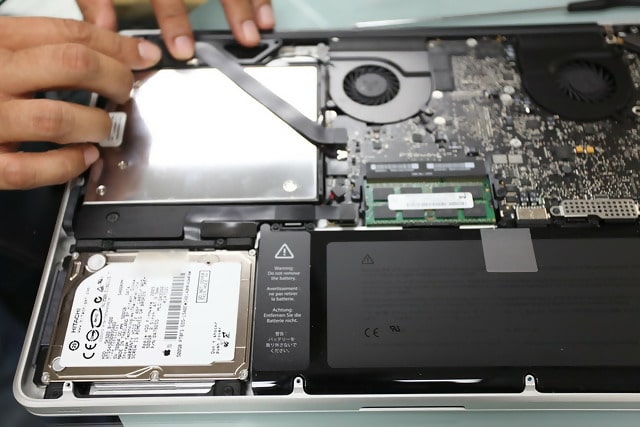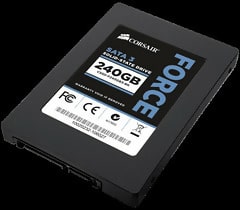Aesthetically, your MacBook Pro probably still looks great – there are minimal scratches, no wear and tear, and (unless you’ve decorated it on your own) it could probably pass as a much newer model. That is, until you open it and you try to do any kind of work. MacBook Pros are made to be used, but that doesn’t mean that they aren’t victims of the old familiar problems: they freeze on a regular basis, files take forever to open, and sometimes they even make weird noises at random time. If this sounds like what you are experiencing, it may be time to replace your MacBook Pro hard drive – and maybe some sage.
Surprisingly, replacing your own MacBook Pro hard drive isn’t that complicated if you are a little handy and can follow directions. You don’t need a computer engineering job to do it, though you might be better off taking it slow and reading our guide for replacing a MacBook Pro hard drive at least once all the way through before you start working.
Why Replacing Your MacBook Pro Hard Drive Is A Good Idea
Let’s start with the basics: what does a hard drive do? It stores the information on your MacBook Pro. This is the information that runs all processes, holds information, and ensures that everything runs smoothly. It is also one of the first items to breakdown on a computer and when it does, it can render the entire thing useless. Storage on a hard drive is based on movement and magnetism. There are parts that spin and write code (data) so that it can be preserved and utilized. However, like with all move parts, the moving parts on a hard drive eventually stop moving as well as they once did.
When this happens, most people think that they need to just throw the entire computer away and buy a new one. Instead, it is possible to not only replace the hard drive for a lesser cost, but actually improve the performance of your computer. To do this, you may want to consider a solid state drive (SSD). There are no moving parts on an SSD.
Are SSDs For Everyone?
SSDs are a great option for anyone who uses their laptop frequently. It is also an option for people who notice the following:
- Your MacBook Pro isn’t running at the speed it used to;
- You have trouble opening or finding the files on your computer;
- The files you try to open are corrupted even though you saved them easily;
- You notice that your computer continually freezes;
- You want to play games, work on graphic design, or do something else that requires heavy usage of your computer;
- You can hear repetitive, clicking noises when you are working and when you aren’t.
Of all the signs, that last one is the direst: you are on your way to a complete disaster and you should act as quickly as possible.
Replacing a MacBook Pro Hard Drive
Before even starting to replace your MacBook Pro hard drive, you will want to gather your materials:
- An SSD
- A Torx screwdriver
- Phillips screwdriver (smaller)
- A SATA-to-USB cable
Remember that the SSD will impact the performance of your computer, so you do not want to get a cheap model. Make sure to read reviews and get the best possible option.
Step 1: Back Up Your Data
The first thing you absolutely need to do is back up your data. You want to connect your SSD to your MacBook Pro using the cable. You may want to do this at night or when you don’t need your computer – it can take a while to back everything up.
- Go to the Applications Folder and choose Disk Utility.
- Click on the SSD icon, then select Partition.
- Select Options and then choose GUID Partition Table.
- Verify Disk Permissions by clicking on the First Aid Tab and then Repair Disk Permission.
- Click Verify Disk then Repair Disk.
- Completely shut down your MacBook Pro. You will then immediately restart it by holding the Option Key. Choose the appropriate option to boot into Recovery Disk.
- Reinstall Mac OS. Ensure that you select the SSD as the destination.
- After installation has completed, select the hard drive like to restore files from another disk onto your SSD.
- Wait.
Once this process s completed, your old, broken hard drive is no longer useful.
Step 2: Prepare For Replacement
The next step is to take the old hard drive out and prepare your MacBook Pro for replacement. To do that, you want to start with your computer upside down on a solid, static-free surface. You may want to have little cups or a place with sides on it for the next few steps.
- Remove the ten screws using the Phillips screwdriver – make sure that you know where you put these and that you don’t lose any. We suggest putting them into the cup right away. Once these are eliminated, you should be able to remove the bottom of your MacBook.
- Locate the hard drive – it should be held in place by plastic. You will have to remove the screws holding the plastic in place. Once again, keep those screws safe. You may want to put them in another cup so you don’t confuse them.
- Remove the hard drive, there should be a SATA ribbon attached. Do not wiggle that – instead, wiggle the connector.
You can now eliminate the hard drive. You may want to destroy it or you can just dispose of it appropriately.
Step 3: Install the SSD
Next, the main event:
- Screw in the Torx screws that were removed from the hard drive (the second set you removed).
- Attach the SATA ribbon to the SSD – make sure you are gentle.
- Put the SSD back into the spot where the hard drive was and then replace the plastic piece.
- Use the ten screws to put the bottom back on the laptop.
You have now successfully upgraded and improved your MacBook Pro.
Step 4: Enjoy Your New MacBook Pro
Now that you have replaced that old, creaky hard drive, your computer will be faster, quieter, more effective, and even lighter. You won’t have to worry about malfunctions, and you can back your work up with confidence.
Worried that you will cause more damage to your laptop if you replace the hard drive by yourself? It’s possible. Need some other type of Mac repair? Give us a call today and we will quote you.


